Article 9 by Paul Kaman:
The Thread That Breaks Gravity:
A Desert Revelation
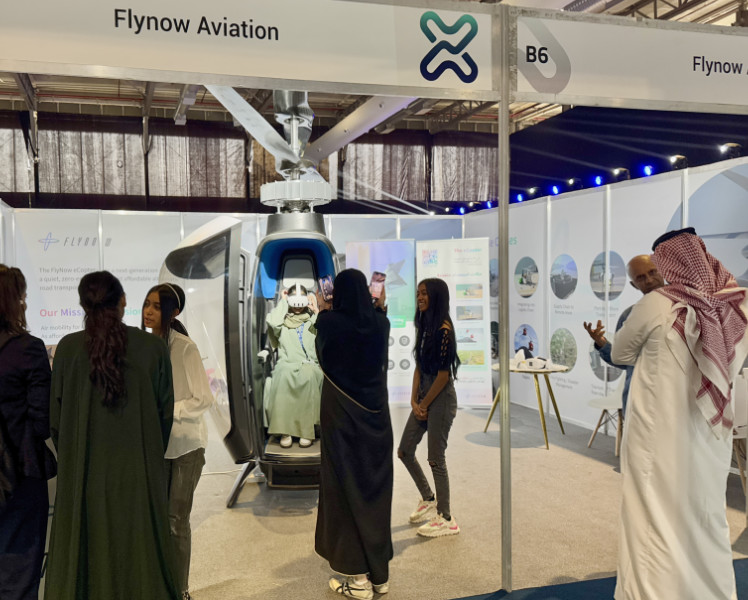
Act I: The Theft
Where the impossible becomes inevitable through feminine audacity.
August 5, 1888. 3:47 AM. Mannheim, Germany.
The engine sat there like a corpse. Cold metal. Dead potential. Carl Benz built God’s chariot and allowed men in black robes to convince him it was Satan’s toy.
Bertha knew better!
She moved through darkness—not the romantic darkness of poets, but the Germanic pre-dawn that smells of coal dust and resignation. Her fingers found the familiar controls. Besides her, two boys breathed shallow breaths. Eugen, fifteen. Richard, thirteen. Old enough to understand conspiracy. Young enough to believe in miracles.
The Patent-Motorwagen wasn’t stolen. You can’t steal what’s already yours by right of vision.
The first crank. Nothing. The second. A cough—mechanical tuberculosis. The third erupted into life, and with it, the 20th century began its violent birth. Churches would damn her. History would sanctify her. But in that moment, she was simply a woman who understood that permission is what the weak wait for while the strong act.
106 kilometers from Mannheim to Pforzheim. No maps for machines. No infrastructure for the impossible.
Here’s what your history books won’t tell you: The machine broke seven times before reaching the city limits. Seven. SEVEN–The biblical number of completions. Each breakdown was a small death. Water boiling away like hope. Brakes dissolving into leather confetti. The fuel line clogging like an artery—which Bertha cleared with her hatpin, performing mechanical surgery on the roadside while farmers gawked at this bourgeois woman covered in oil and destiny.
The cobbler in Bauschlott who fixed her brakes? He thought her insane. The pharmacist in Wiesloch who sold her ligroin? He recorded it as “cleaning fluid” because even he couldn’t process the truth — that he’d just created humanity’s first fuel station. When the ignition failed, she used her garter as electrical tape.
Think about that for a moment. A corset strap holding the future of human mobility together.
They reached Pforzheim as darkness fell. Carl received the telegram: “We have arrived safely.” Four words that destroyed every argument against progress. Not through masculine engineering prowess, but through feminine determination to prove that ordinary people — women, children, the mechanically ignorant — could trust their lives to this metal beast.
Orders flooded in. The impossible had been domesticated.
Act II: The Recognition
When time collapses in the Saudi desert.
September 2, 2025. SADEX, Riyadh. 5:17 PM.
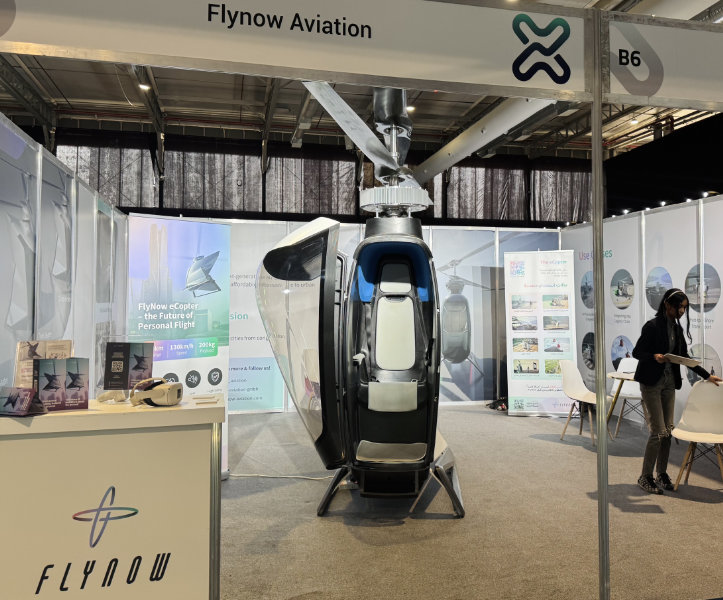
“Follow me. You need to see something impossible.”
Yvonne Winter doesn’t speak in maybes. The Co-Founder and COO of FlyNow Aviation moves through the drone exhibition like Bertha moved through that German dawn—with purpose that makes physics optional.
Four months. That’s all. Four months since I wrote about Bertha Benz on LinkedIn, and now Winter was guiding me toward… what? This was SADEX. Drones. Aviation. The mechanical futures. Not automotive archaeology?
Then I saw it.
Sitting in the SEVEN Car Lounge booth like a temporal glitch: the actual Patent-Motorwagen. Not a replica. Not a “similar model.” The exact machine from Bertha’s revolution, here in the Saudi desert, at a drone show, four months after I’d written about her.
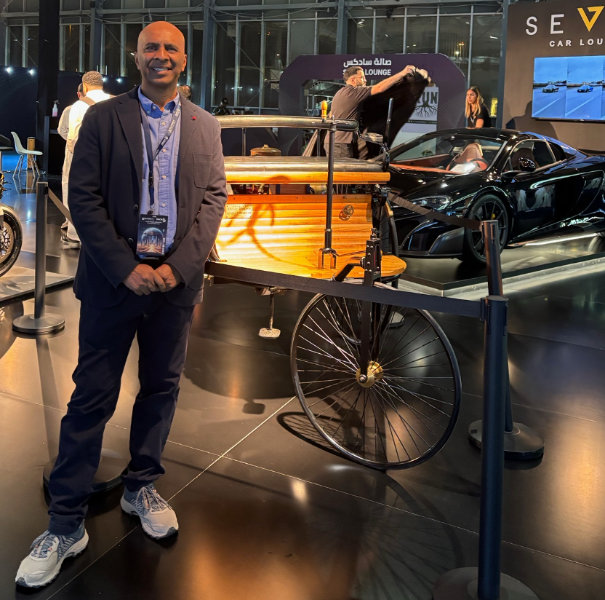
SEVEN Car Lounge understood something profound — that innovation isn’t about technology but about the courage to make technology human. They’d brought Bertha’s machine here not as a museum piece but as a talisman. As proof that the impossible is always just waiting for someone crazy enough to steal it from the gods.
September 5, 2025. Seven Car Lounge HQs in Riyadh. 11:27 PM.
Winter stood there, her eCopter gleaming beside the Motorwagen. Same defiance across 137 years. Same bet against conventional wisdom. She looked at me — through me — and said: “Bertha had Carl Benz. I have Jürgen Greil.”
The Wizard Behind the Curtain
Jürgen Greil doesn’t speak much. Engineers seldom do when their machines scream elegance. The CEO and chief architect of FlyNow have done something that shouldn’t be possible: he has made EASA-compliant aviation feel inevitable rather than impossible.
Like Carl Benz, Greil is the mechanical mystic, the one who translates physics into poetry. His coaxial rotor design doesn’t just work — it works with the kind of redundancy that makes mothers trust it with their children. Multiple independent motors. Multiple independent batteries and Multiple Flight Controls. If one fails, you land. If two fail, you land. If three fail, you land. If four fail, you autorotate and land. Even if all of that fails, a one in gazillion chance—well, at that point, God himself wants you earthbound.
But here’s what sets Greil apart from the thousands of other engineers designing flying cars: he thinks at an automotive scale from the very start. While others craft artisanal aircraft like Stradivarius violins, Greil builds eCopters like Toyota builds Camrys. Repeatable. Reliable. Revolutionary only in their refusal to be special. He designs for all humans, not just a select few.
More than 400 test flights. Not attempts. Flights! Actual gravity-defying flights. Each one teaching the machine to be more machine and less miracle.
Winter and Greil have created something beyond technology — they’ve created belief. The Salaam.earth consortium isn’t just infrastructure; it’s an ecosystem that assumes success. They’re using AR/VR not as a gimmick but as a gateway drug to three-dimensional thinking.
Act III: The Thread Unbroken
In which the future remembers how to fly.
Here’s your misconception: you think innovation is about invention. Wrong. Dead wrong. Innovation is about permission — giving humanity permission to want what it doesn’t deserve.
Bertha Benz didn’t invent the automobile. She gave the world permission to trust it.
Yvonne Winter isn’t inventing urban air mobility. She’s giving Saudi Arabia—and through it, the world — permission to expect it. Saudi Arabia? Yes, Saudi Arabia!!! Vision 2030, Saudi Arabia.
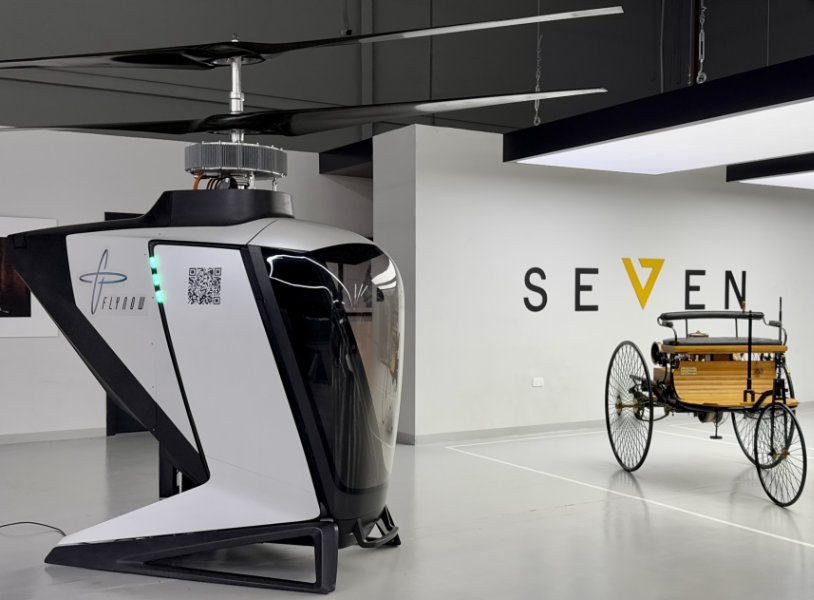
But here’s the brutal truth you won’t want to hear: most of you will resist this just as fiercely as those German churches resisted the Motorwagen. You’ll cite safety concerns (valid). Regulatory hurdles (real). Infrastructure challenges (massive). Market readiness (questionable).
You’ll be right about everything except what matters.
Because Winter and Greil aren’t asking for your permission, they’re taking that 3:47 AM drive through three dimensions. They’re breaking down and breaking through. They’re clearing clogged fuel lines with hatpins of determination.
Saudi Arabia’s Vision 2030 isn’t just policy — it’s permission at scale. While Western aviation suffocates under regulatory amber, the Kingdom is building the sky’s infrastructure before the sky needs it.
The Desert Prophecy
In Greek mythology, Icarus flew too close to the sun. We remember his fall but forget his flight. Bertha Benz traveled across the world when everyone said she would crash. Jürgen Greil is building wings that won’t melt—wings with redundancy, wings with automotive DNA, wings that assume failure and engineer around it.
The Patent-Motorwagen at that desert exhibition wasn’t a coincidence. It was a prophecy. SEVEN Car Lounge didn’t just showcase history — they built a temporal bridge between two women who refuse to accept that impossible is permanent.
Want recent examples? Look at Tesla’s decade of “impossible” until it wasn’t. SpaceX’s reusable rockets, which experts called “financial suicide” until they started landing. Every revolution seems crazy at first until it becomes inevitable.
FlyNow isn’t competing with other aviation companies. They’re competing with the ground itself. And in that competition, they have an advantage that no amount of engineering can provide: they have Winter’s refusal to accept that humans are two-dimensional creatures, and Greil’s ability to make that refusal mechanically manifest.
The Revelation
Standing in the SEVEN Car Lounge, watching Winter position the eCopter next to Bertha’s machine, I realized something that unsettled me: we’re not witnessing the future of mobility. We’re seeing its past. In twenty years, our children will look at roads the way we look at telegraph lines in old movies—quaint infrastructure from when humans were stuck to surfaces.
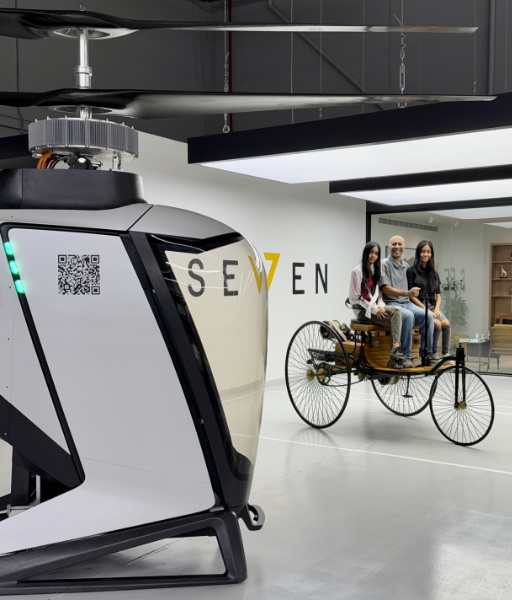
Winter knows this. Greil builds for this. Together, they’re not asking us to imagine eCopters. They’re building a world where not flying seems primitive.
The thread from Bertha to Yvonne isn’t just unbroken — it’s pulling us forward, up, into dimensions we’ve been too frightened to claim. The same courage. The same clarity. The same beautiful, terrifying certainty that the impossible is just uninvented.
Some will call them dreamers. Others, fools. But I’ve seen the Motorwagen beside the eCopter. I’ve watched Winter’s eyes when she speaks about three-dimensional cities. I’ve studied Greil’s redundancies that make failure afraid to fail.
They’re not dreamers. They’re thieves. Just like Bertha!
They’re stealing the future from those too timid to take it.
And at a desert exhibition in Riyadh, between drone displays and technological prophecies, SEVEN Car Lounge provided the altar where past and future shook hands and agreed: the impossible was always inevitable.
It just needed someone brave enough to steal it at 3:47 AM.
The author thanks SEVEN Car Lounge for their profound understanding of history’s circular nature and their role in making visible the invisible thread connecting mobility’s revolutionaries across centuries. Sometimes the most significant innovation is simply putting the correct symbols next to each other and letting time collapse into meaning.

